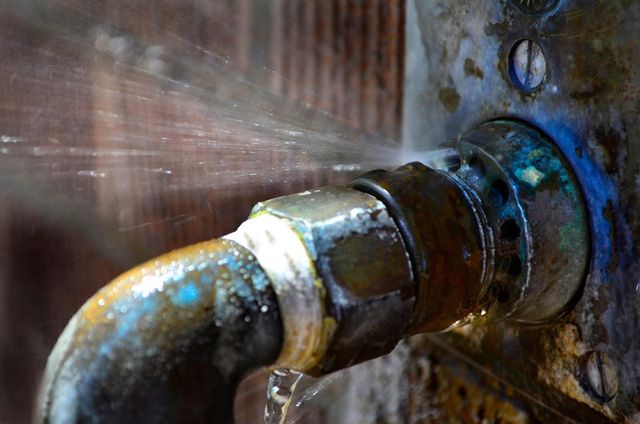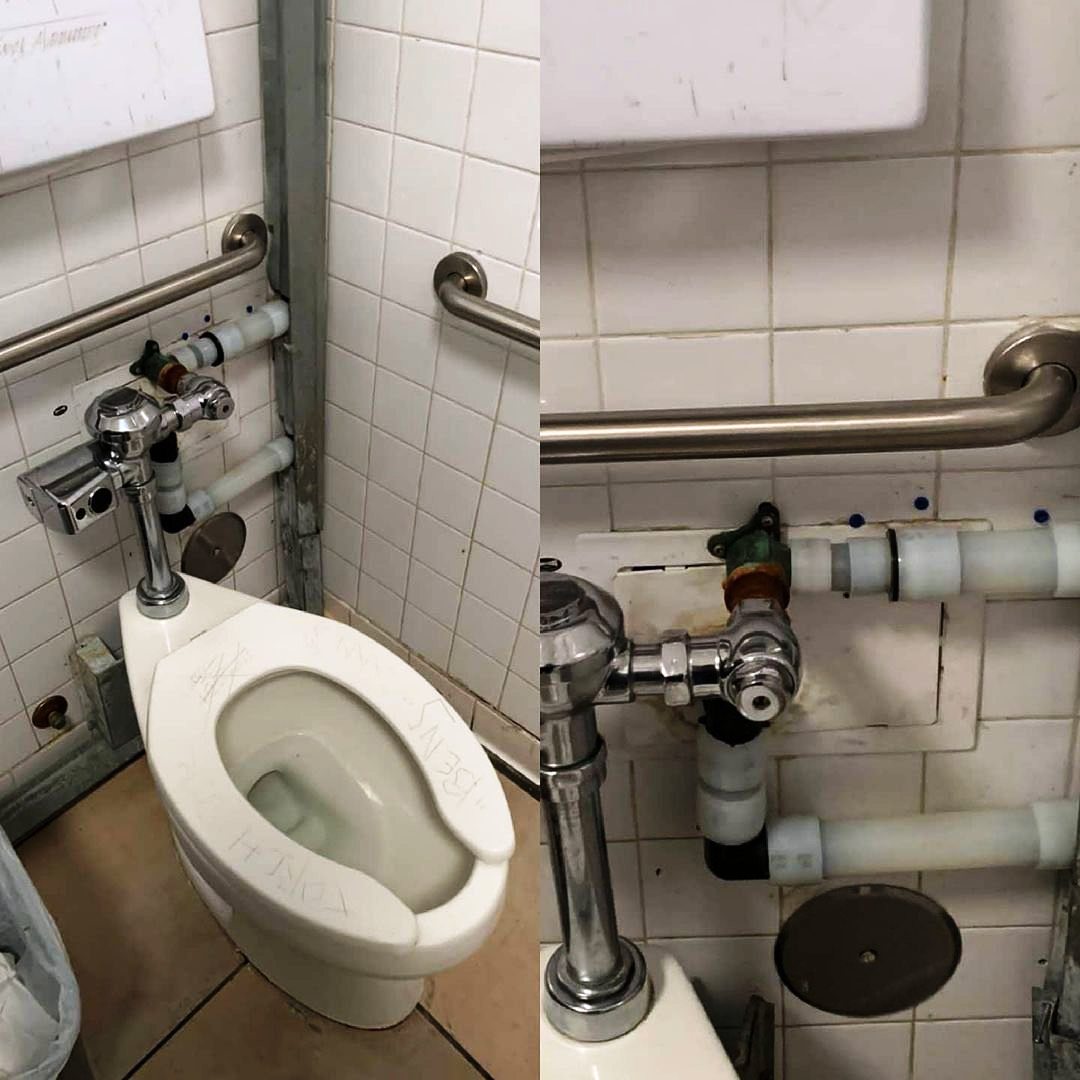Determining And Fixing Plumbing Sounds In Your Home
Determining And Fixing Plumbing Sounds In Your Home
Blog Article
What're your thoughts regarding How To Fix Noisy Pipes?

To identify loud plumbing, it is necessary to determine initial whether the unwanted noises take place on the system's inlet side-in various other words, when water is transformed on-or on the drainpipe side. Noises on the inlet side have varied causes: excessive water pressure, worn valve as well as faucet parts, incorrectly linked pumps or various other home appliances, inaccurately positioned pipeline fasteners, and plumbing runs including too many tight bends or other constraints. Sounds on the drainpipe side usually originate from inadequate area or, just like some inlet side sound, a design consisting of limited bends.
Hissing
Hissing noise that happens when a faucet is opened slightly generally signals excessive water pressure. Consult your neighborhood public utility if you presume this problem; it will be able to tell you the water pressure in your area and also can mount a pressurereducing shutoff on the inbound water supply pipe if necessary.
Other Inlet Side Noises
Creaking, squealing, damaging, breaking, and also touching generally are brought on by the development or tightening of pipelines, normally copper ones providing hot water. The audios take place as the pipelines slide versus loose fasteners or strike neighboring residence framework. You can typically identify the place of the problem if the pipes are exposed; simply adhere to the noise when the pipes are making noise. Most likely you will uncover a loosened pipeline hanger or an area where pipes exist so near to floor joists or other framing pieces that they clatter versus them. Affixing foam pipe insulation around the pipes at the point of contact need to fix the problem. Make certain bands as well as hangers are safe and secure and also supply sufficient support. Where feasible, pipeline fasteners must be connected to massive architectural aspects such as foundation wall surfaces instead of to mounting; doing so minimizes the transmission of vibrations from plumbing to surfaces that can intensify as well as transfer them. If affixing fasteners to framing is inescapable, wrap pipes with insulation or various other durable product where they call fasteners, and also sandwich completions of new bolts between rubber washers when mounting them.
Fixing plumbing runs that deal with flow-restricting tight or many bends is a last option that should be embarked on only after getting in touch with a competent plumbing contractor. However, this situation is rather typical in older residences that may not have actually been developed with interior plumbing or that have seen numerous remodels, especially by beginners.
Chattering or Screeching
Extreme chattering or screeching that happens when a shutoff or faucet is switched on, which typically goes away when the fitting is opened completely, signals loosened or faulty inner components. The solution is to change the shutoff or faucet with a brand-new one.
Pumps and home appliances such as cleaning devices and also dishwashers can transfer electric motor sound to pipelines if they are improperly attached. Connect such products to plumbing with plastic or rubber hoses-never rigid pipe-to isolate them.
Drain Sound
On the drain side of plumbing, the chief objectives are to eliminate surfaces that can be struck by dropping or hurrying water and to protect pipelines to contain inevitable noises.
In brand-new construction, tubs, shower stalls, commodes, and also wallmounted sinks and basins should be set on or against resistant underlayments to lower the transmission of sound with them. Water-saving bathrooms as well as taps are much less loud than conventional models; install them as opposed to older kinds even if codes in your area still permit utilizing older components.
Drains that do not run up and down to the cellar or that branch into straight pipeline runs supported at floor joists or various other framing existing specifically troublesome noise issues. Such pipelines are large enough to emit significant resonance; they additionally lug substantial amounts of water, which makes the situation worse. In new building, specify cast-iron dirt pipelines (the big pipelines that drain pipes commodes) if you can manage them. Their enormity includes much of the noise made by water going through them. Likewise, prevent transmitting drainpipes in walls shared with bedrooms and rooms where people gather. Walls containing drains need to be soundproofed as was defined previously, making use of dual panels of sound-insulating fiber board and also wallboard. Pipelines themselves can be wrapped with special fiberglass insulation produced the purpose; such pipelines have a resistant vinyl skin (in some cases containing lead). Outcomes are not always acceptable.
Thudding
Thudding noise, usually accompanied by trembling pipes, when a faucet or device valve is turned off is a problem called water hammer. The sound as well as vibration are brought on by the reverberating wave of pressure in the water, which instantly has no location to go. In some cases opening up a shutoff that discharges water promptly into a section of piping including a restriction, elbow, or tee fitting can generate the exact same condition.
Water hammer can usually be cured by mounting installations called air chambers or shock absorbers in the plumbing to which the trouble shutoffs or faucets are connected. These devices permit the shock wave developed by the halted circulation of water to dissipate in the air they include, which (unlike water) is compressible.
Older plumbing systems may have brief upright sections of capped pipeline behind wall surfaces on faucet runs for the very same objective; these can ultimately full of water, reducing or destroying their effectiveness. The treatment is to drain pipes the water system completely by shutting down the major water system valve and also opening up all faucets. Then open up the primary supply valve and also shut the faucets one by one, starting with the tap nearest the shutoff and finishing with the one farthest away.
WHY IS MY PLUMBING MAKING SO MUCH NOISE?
This noise indeed sounds like someone is banging a hammer against your pipes! It happens when a faucet is opened, allowed to run for a bit, then quickly shut — causing the rushing water to slam against the shut-off valve.
To remedy this, you’ll need to check and refill your air chamber. Air chambers are filled with — you guessed it — air and help absorb the shock of moving water (that comes to a sudden stop). Over time, these chambers can fill with water, making them less effective.
You’ll want to turn off your home’s water supply, then open ALL faucets (from the bathroom sink to outdoor hose bib) to drain your pipes. Then, turn the water back on and hopefully the noise stops! If you’re still hearing the sound, give us a call to examine further.
Whistles
Whistling sounds can be frustrating, as sometimes the source isn’t easily identified. However, if you can pinpoint which faucet or valve that may be the cause, you’ll likely encounter a worn gasket or washer — an easy fix if you replace the worn parts!Whistling sounds from elsewhere can mean a number of things — from high water pressure to mineral deposits. Your best plan of attack here is to give our plumbing experts a call. We’ll be able to determine where the noise is coming from and what the cause may be, then recommend an effective fix!
Cracks or Ticks
Cracking or ticking typically comes from hot water going through cold, copper pipes. This causes the copper to expand resulting in a cracking or ticking sound. Once the pipes stop expanding, the noise should stop as well.
Pro tip: you may want to lower the temperature of your water heater to see if that helps lessen the sound, or wrapping the pipe in insulation can also help muffle the noise.
Bangs
Bangs typically come from water pressure that’s too high. To test for high water pressure, get a pressure gauge and attach it to your faucet. Water pressure should be no higher than 80 psi (pounds per square inch) and also no lower than 40 psi. If you find a number greater than 80 psi, then you’ve found your problem!
Next step is to give us a call in order to install a pressure regulator. Trust us, you don’t want to wait to resolve this issue. Not only is the sound annoying, but high water pressure can be destructive to your home — including damaging certain appliances, like your washer and dishwasher.
Dripping
You might be accustom to the slow quiet drip your kitchen faucet makes. You might have even tuned out your bathroom sink dripping and drabbing all day long — but it’s time to find its cause.
A slow drip could signify a variety of easy to fix issues, such as a worn out O ring, or loose part. And by ignoring the drip, you could be wasting up to 2,000 gallons of water a year! So start conserving water — get it looked at ASAP.
https://www.pwessig.com/blog/2018/december/why-is-my-plumbing-making-so-much-noise-/

As a fervent person who reads about Why Do My Plumbing Pipes Make A Knocking Noise, I was thinking sharing that piece of content was appropriate. Do you know somebody who is inquisitive about the niche? Take a moment to share it. Thanks for your time invested reading it.
Request An Appointment Report this page